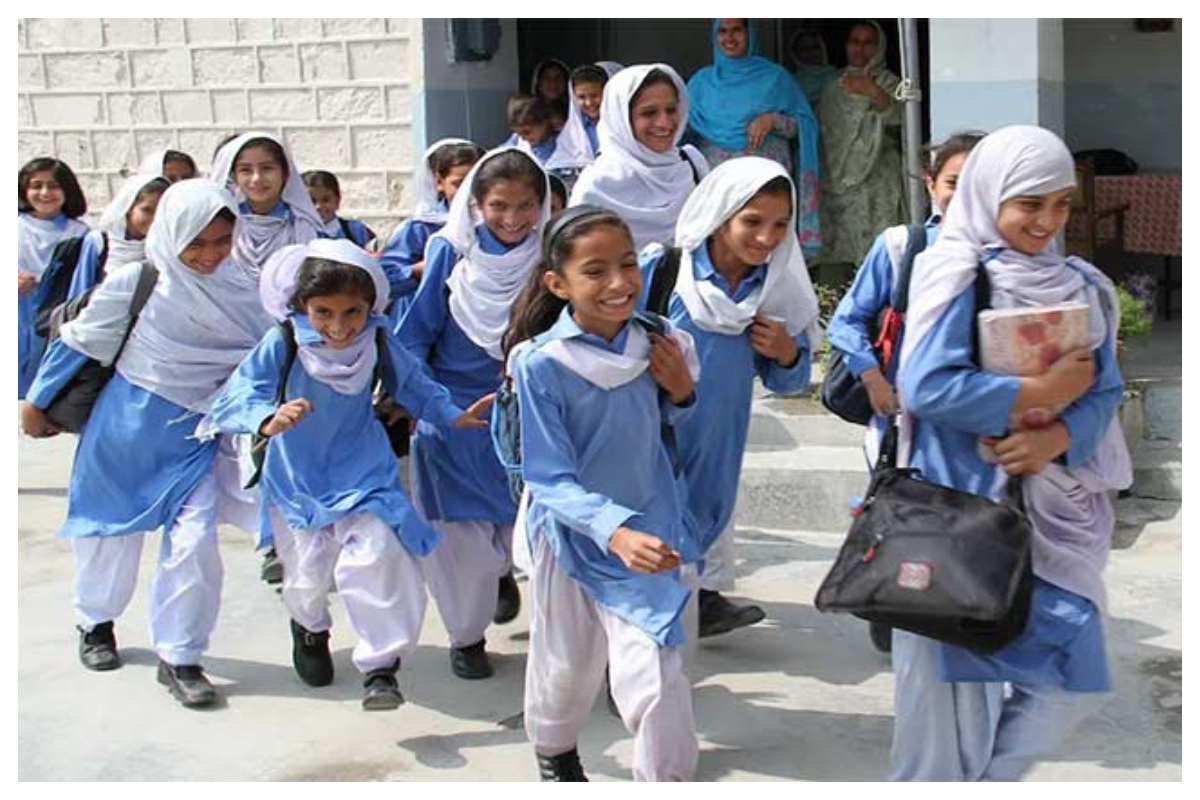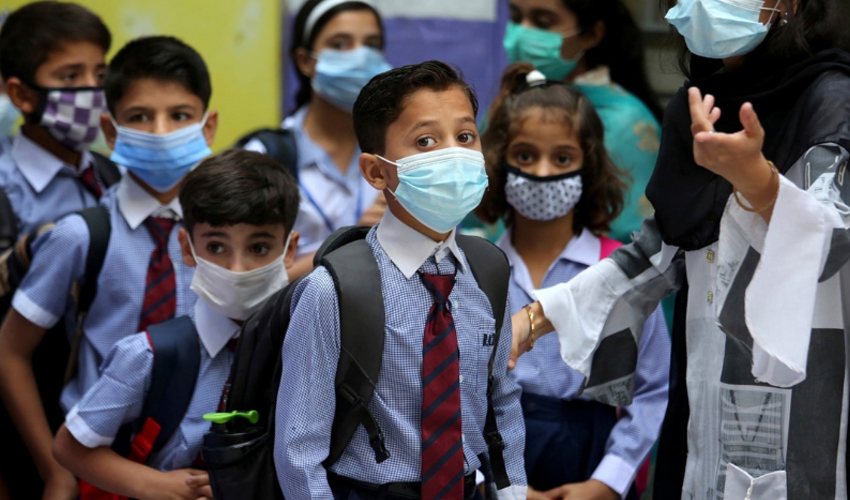Punjab is currently experiencing an intense heatwave that has brought daily life to a standstill. In response to the soaring temperatures, the government has made the difficult decision to close schools starting May 25th. This unprecedented move aims to protect students and staff from the severe heat, but it also presents significant challenges for the education system and the broader community.
Understanding Heatwaves
Definition of a Heatwave
A heatwave is a prolonged period of excessively hot weather, which may be accompanied by high humidity. These events are defined based on temperature thresholds that vary by region, making them a relative phenomenon. Typically, a heatwave lasts for several days to weeks.
Causes of Heatwaves
Heatwaves occur due to a variety of meteorological factors. High-pressure systems trap warm air in an area, preventing it from dissipating. This, combined with reduced wind speeds and clear skies, results in intense heat. Human activities, particularly those contributing to climate change, have been linked to the increasing frequency and severity of heat waves.
Impact on Health and Daily Life
Heatwaves pose serious health risks, including heat exhaustion and heat stroke. They can exacerbate existing health conditions and lead to increased mortality rates. Additionally, daily activities become challenging, impacting productivity and quality of life.
The Current Situation in Punjab
Description of the Current Heatwave
Punjab is enduring one of its worst heatwaves in recent history. Temperatures have consistently exceeded 45°C (113°F), making it difficult for residents to carry out routine tasks. The oppressive heat has strained public services and infrastructure.
Temperature Records and Comparisons
Recent records show that this heatwave rivals some of the hottest periods on record for the region. Comparisons with previous years indicate a troubling trend of rising temperatures and prolonged heat events, underscoring the urgency of addressing climate change.
Immediate Effects on the Population
The immediate effects include widespread discomfort, health emergencies, and disruptions to daily life. Vulnerable populations, such as the elderly and children, are particularly at risk. Public services are stretched thin, with hospitals seeing a surge in heat-related cases.
Impact on Education
The decision to Close Schools
The Punjab government, prioritizing health and safety, has decided to close schools from May 25th until further notice. This decision, while necessary, disrupts the academic calendar and poses challenges for students and educators alike.
Statements from Educational Authorities
Educational authorities have issued statements explaining the rationale behind the closures. They emphasize the importance of protecting students and staff from the dangerous heat, highlighting efforts to mitigate the educational impact through alternative learning strategies.
Reactions from Parents and Students
Parents and students have expressed a mix of relief and concern. While the health benefits of the closures are acknowledged, there is anxiety about the potential academic setbacks and the feasibility of remote learning in such conditions.
Health Concerns
Heat-related Illnesses
Heatwaves can cause a range of health issues, from dehydration and heat exhaustion to the more severe heat stroke. Symptoms include dizziness, confusion, and in extreme cases, loss of consciousness and organ failure.
Vulnerable Groups
Certain groups are more susceptible to heat-related illnesses, including the elderly, young children, pregnant women, and individuals with pre-existing health conditions. Ensuring these groups are adequately protected is a public health priority.
Safety Measures Recommended by Health Officials
Health officials recommend staying indoors during peak heat hours, staying hydrated, wearing lightweight clothing, and using fans or air conditioning if available. Public advisories also stress the importance of checking on vulnerable neighbors and family members.
Government Response
Official Statements and Press Releases
The Punjab government has released several statements detailing the measures being taken to combat the heatwave. These include school closures, advisories for the general public, and efforts to support vulnerable populations.
Actions Taken by the Government
Beyond closing schools, the government has set up cooling centers, distributed water, and launched public awareness campaigns. Emergency services are on high alert to respond to heat-related incidents.
Coordination with Local Authorities
Local authorities are working closely with the state government to implement these measures effectively. This includes coordination with health services, educational institutions, and community organizations.
Historical Context
Previous Heatwaves in Punjab
Punjab has faced heat waves in the past, though the current event’s intensity and duration are exceptional. Historical data provides a benchmark for understanding and improving responses to such extreme weather.
Lessons Learned from Past Events
Past heatwaves have taught valuable lessons in preparedness and response. Improved forecasting, public awareness, and infrastructure upgrades have helped mitigate some impacts, though challenges remain.
Improvements in Handling Extreme Weather
Advancements in meteorology, better infrastructure, and increased public awareness have improved Punjab’s ability to handle extreme weather. Continued investment in these areas is crucial for future resilience.
Community Reactions
Public Opinion on School Closures
The public has generally supported the decision to close schools, recognizing the health risks posed by the heatwave. However, there is also concern about the disruption to education and the effectiveness of remote learning options.

Social Media Reactions
Social media has been abuzz with discussions about the heatwave and school closures. Many users share tips on staying cool, express solidarity with affected families, and critique the government’s handling of the situation.
Stories from Affected Families
Families have shared their experiences of coping with the heatwave. These stories highlight the struggles of managing daily life, maintaining health, and ensuring children’s education continues amid the closures.
Long-term Implications
Impact on the Academic Calendar
The school closures will likely affect the academic calendar, potentially leading to extended school years or adjustments to holiday schedules. This could have cascading effects on students’ academic progression and extracurricular activities.
Potential for Extended Closures
If the heatwave persists, school closures may need to be extended, further complicating educational planning. Authorities are preparing contingency plans to address this possibility.
Future Preparedness Plans
The current heatwave underscores the need for robust future preparedness plans. This includes better infrastructure, enhanced early warning systems, and comprehensive strategies for maintaining education during extreme weather events.
Climate Change Connection
Link Between Heatwaves and Global Warming
Scientists have established a strong link between global warming and the increasing frequency of heatwaves. Rising global temperatures contribute to more extreme and prolonged heat events, a trend expected to continue if greenhouse gas emissions are not curbed.
Scientific Explanations
Climate change alters weather patterns, leading to more intense and frequent heatwaves. The accumulation of greenhouse gases traps more heat in the atmosphere, driving temperatures higher and disrupting established weather norms.
Predictions for Future Weather Patterns
Future projections indicate that heatwaves will become more common and severe. This highlights the urgent need for climate action to mitigate these impacts and protect vulnerable communities.
Educational Alternatives
Online Learning Options
To minimize educational disruption, online learning platforms are being utilized. Schools are providing digital resources and virtual classes, although access and quality vary across regions.
Strategies for Minimizing Disruption
Schools are adopting flexible schedules, offering recorded lessons, and using hybrid models to balance in-person and remote learning. These strategies aim to ensure continuity of education despite the heatwave.
Success Stories from Other Regions
Other regions facing similar challenges have successfully implemented online and hybrid learning models. Sharing these success stories can provide valuable insights and inspiration for Punjab’s education system.
Economic Impact
Effect on Local Businesses
The heatwave affects local businesses, particularly those reliant on outdoor activities. Reduced foot traffic and increased operational costs for cooling measures strain business finances.
Cost of Emergency Measures
Implementing emergency measures, such as cooling centers and public health campaigns, incurs significant costs. These expenses are necessary to protect public health but can strain government budgets.
Long-term Economic Concerns
The long-term economic impacts of frequent heatwaves include reduced productivity, higher healthcare costs, and the need for ongoing investments in infrastructure and preparedness. Addressing these challenges requires coordinated efforts and sustainable policies.
Supporting the Community
Role of Non-Governmental Organizations
NGOs play a crucial role in supporting communities during heatwaves. They provide resources, raise awareness, and assist vulnerable populations, complementing government efforts.
Community-led Initiatives
Community-led initiatives, such as neighborhood cooling centers and volunteer check-ins with vulnerable residents, demonstrate resilience and solidarity. These grassroots efforts are vital for coping with extreme weather events.
Volunteer Efforts
Volunteers are stepping up to help distribute water, provide transportation to cooling centers, and assist with other critical needs. Their contributions are invaluable in managing the heatwave’s impact.
Personal Stories
Interviews with Students and Teachers
Interviews with students and teachers reveal the personal challenges and adaptations required during school closures. Their stories highlight resilience and the importance of community support.
Experiences of Healthcare Workers
Healthcare workers share their experiences of dealing with heat-related illnesses. Their dedication and hard work are crucial in managing the public health crisis posed by the heatwave.
Resilience and Adaptation Stories
Stories of resilience and adaptation showcase how individuals and communities are coping with the heatwave. These narratives provide hope and inspiration for overcoming challenges.
Conclusion
In conclusion, the heatwave in Punjab has disrupted education and daily life, necessitating school closures and emergency measures. While the immediate focus is on managing the current crisis, there is a pressing need for long-term solutions to enhance resilience against extreme weather. Community support, effective government action, and sustainable practices are key to navigating these challenges and safeguarding the future.
